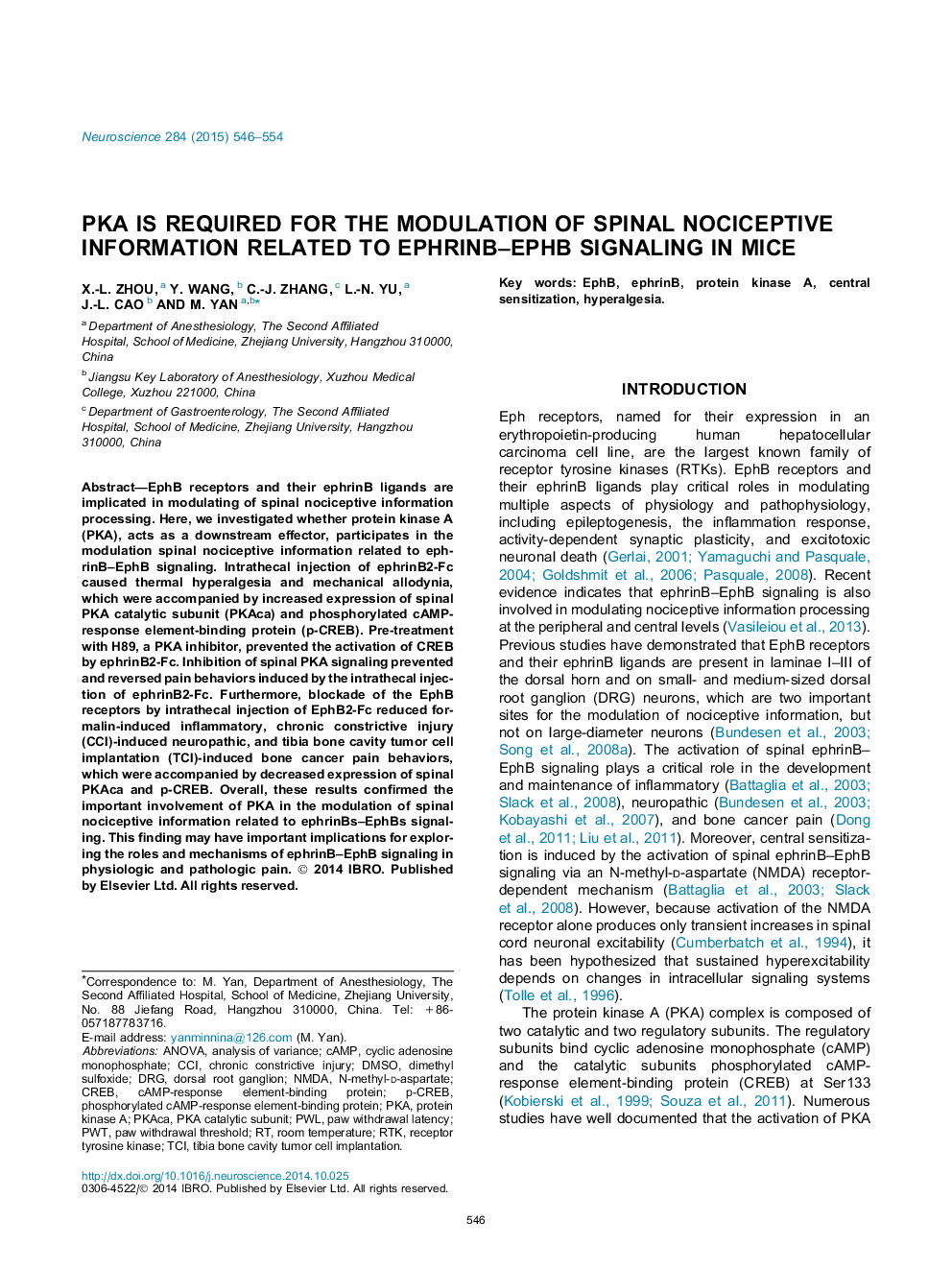| Article ID | Journal | Published Year | Pages | File Type |
|---|---|---|---|---|
| 6273026 | Neuroscience | 2015 | 9 Pages |
Abstract
EphB receptors and their ephrinB ligands are implicated in modulating of spinal nociceptive information processing. Here, we investigated whether protein kinase A (PKA), acts as a downstream effector, participates in the modulation spinal nociceptive information related to ephrinB-EphB signaling. Intrathecal injection of ephrinB2-Fc caused thermal hyperalgesia and mechanical allodynia, which were accompanied by increased expression of spinal PKA catalytic subunit (PKAca) and phosphorylated cAMP-response element-binding protein (p-CREB). Pre-treatment with H89, a PKA inhibitor, prevented the activation of CREB by ephrinB2-Fc. Inhibition of spinal PKA signaling prevented and reversed pain behaviors induced by the intrathecal injection of ephrinB2-Fc. Furthermore, blockade of the EphB receptors by intrathecal injection of EphB2-Fc reduced formalin-induced inflammatory, chronic constrictive injury (CCI)-induced neuropathic, and tibia bone cavity tumor cell implantation (TCI)-induced bone cancer pain behaviors, which were accompanied by decreased expression of spinal PKAca and p-CREB. Overall, these results confirmed the important involvement of PKA in the modulation of spinal nociceptive information related to ephrinBs-EphBs signaling. This finding may have important implications for exploring the roles and mechanisms of ephrinB-EphB signaling in physiologic and pathologic pain.
Keywords
NMDAPka catalytic subunitEphrinBEphBRTKTCIp-CREBPWLCCIN-methyl-d-aspartatePWTpKaCREBDRGdorsal root ganglioncAMPDMSOCyclic adenosine monophosphatepaw withdrawal thresholdchronic constrictive injurypaw withdrawal latencyanalysis of varianceANOVARTK, Receptor tyrosine kinaseCentral sensitizationRoom temperatureDimethyl sulfoxideHyperalgesiacAMP-response element-binding proteinprotein kinase A
Related Topics
Life Sciences
Neuroscience
Neuroscience (General)
Authors
X.-L. Zhou, Y. Wang, C.-J. Zhang, L.-N. Yu, J.-L. Cao, M. Yan,
